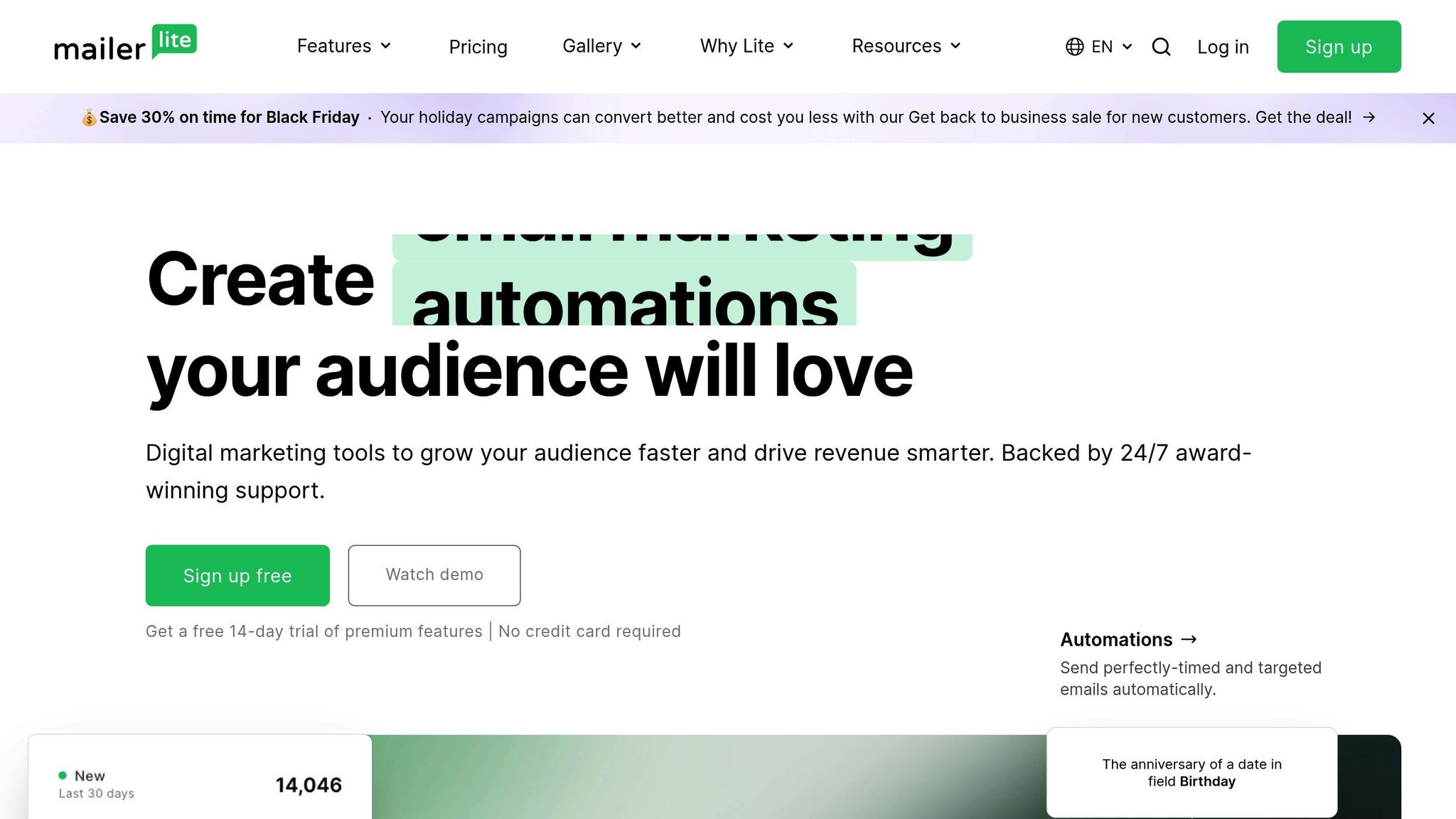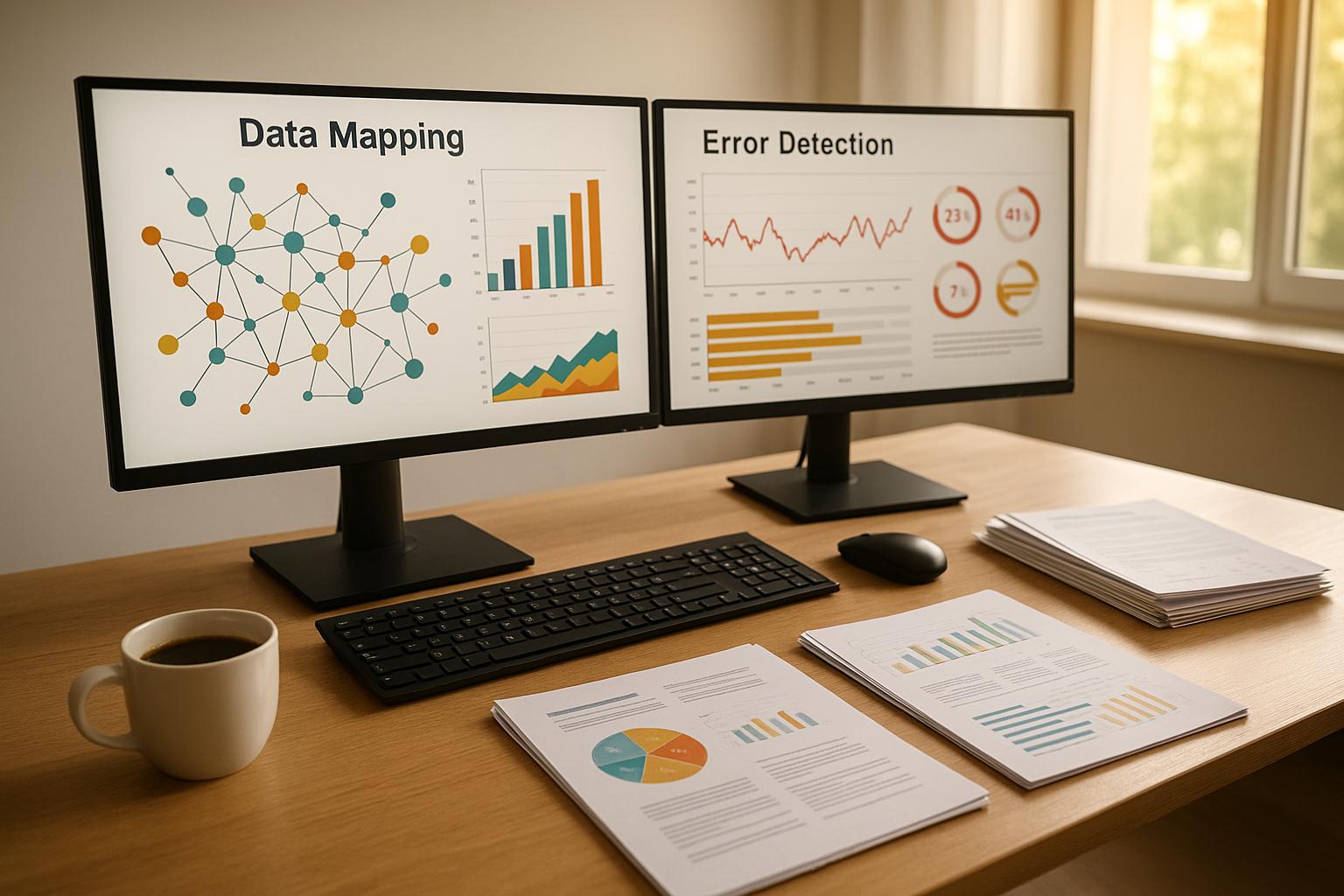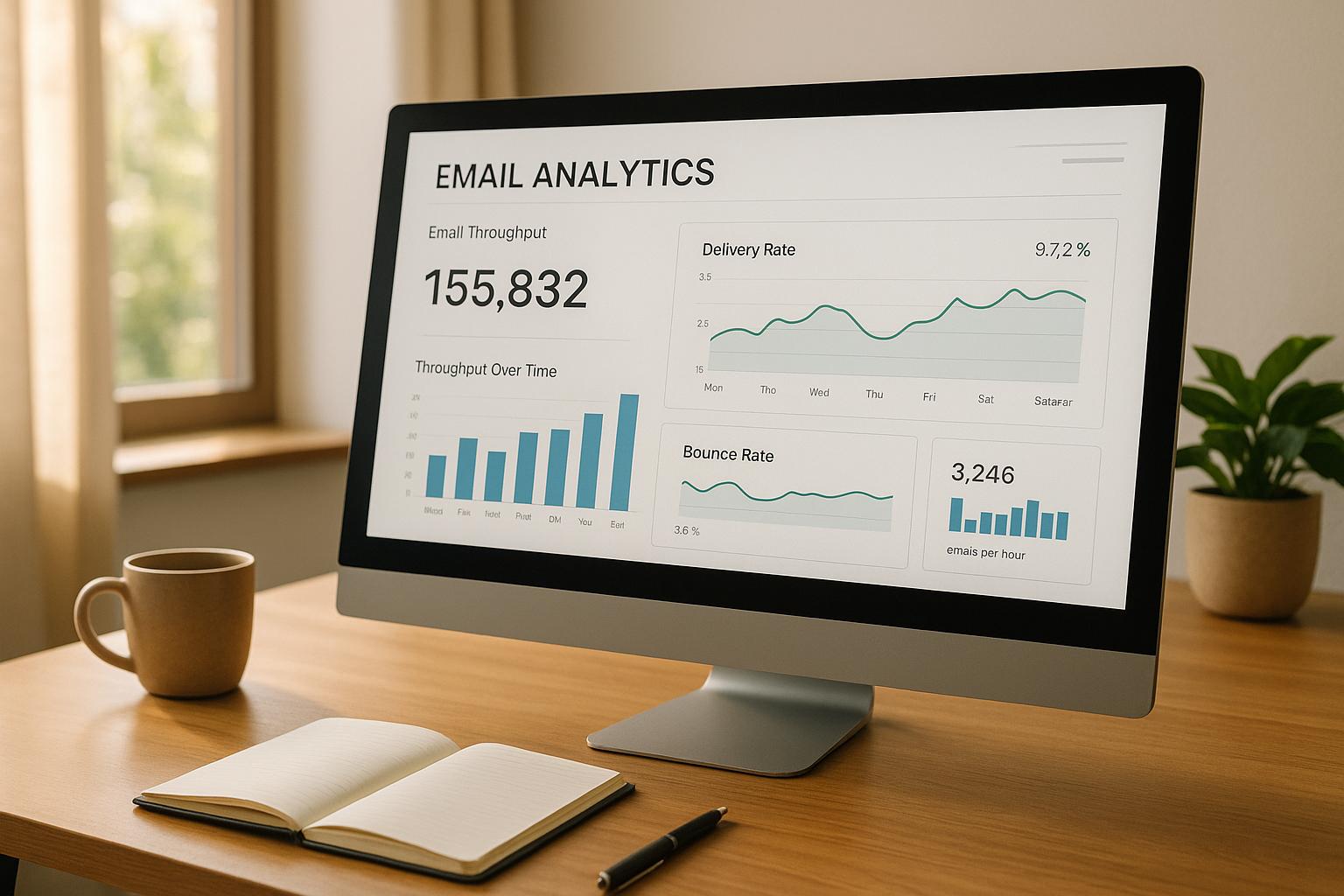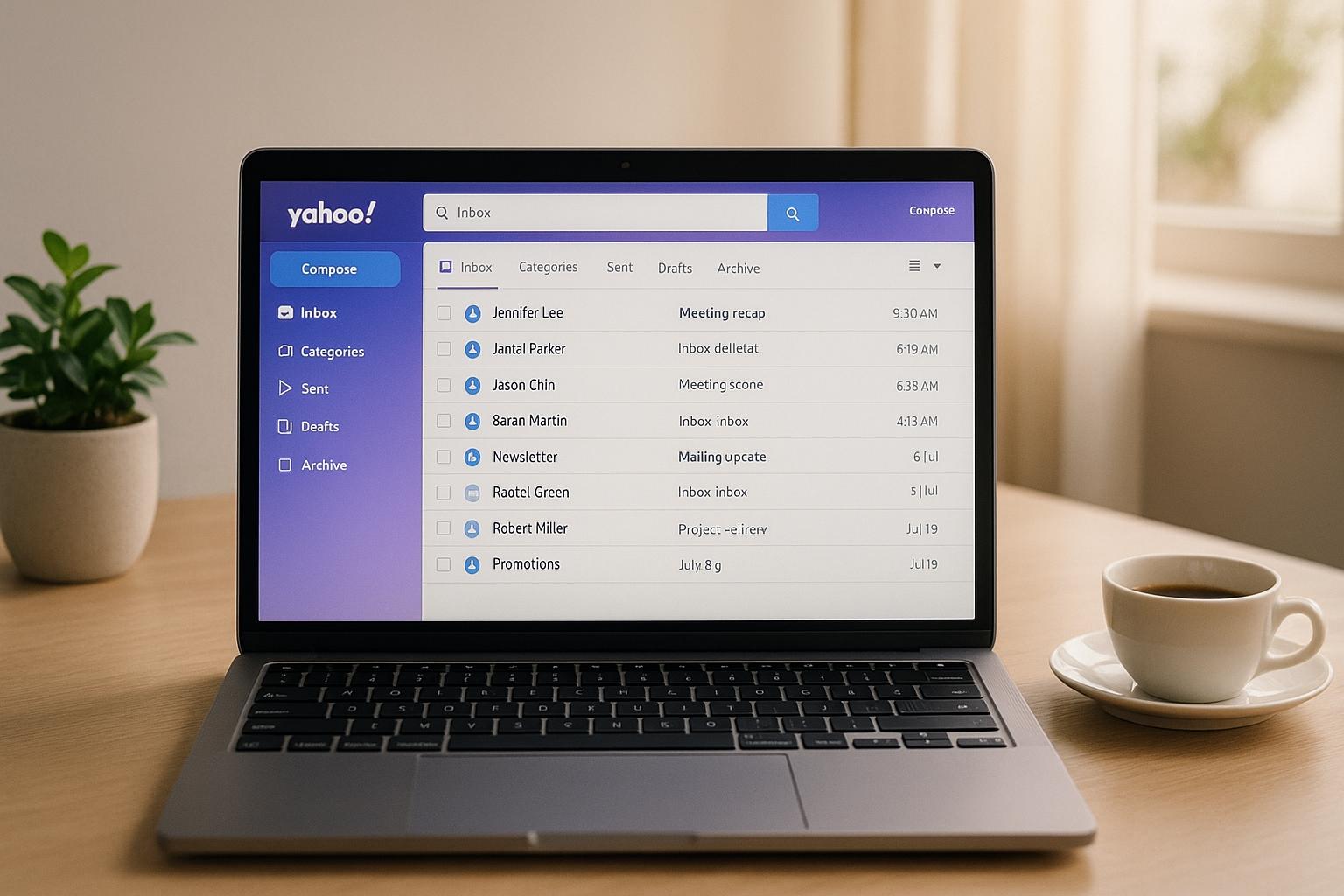In email marketing platforms, user roles define what each team member can and cannot do. This ensures security, simplifies compliance, and improves collaboration. Here's a quick breakdown:
- Why User Roles Matter: They protect sensitive data, streamline workflows, and support regulations like GDPR and CAN-SPAM.
- Common Roles:
- Administrator: Full access, including billing and user management.
- Marketing Manager: Can create campaigns and manage lists but lacks admin privileges.
- Analyst: Read-only access to reports and analytics.
- Designer: Focuses on templates and assets, with no access to subscriber data.
- Support: Limited access to update subscriber details.
- Custom Roles: Tailored permissions for specific needs, like temporary project access or regional compliance.
Best Practices:
- Assign only necessary access.
- Use multi-factor authentication.
- Audit roles regularly to ensure security and compliance.
Role management ensures your team works efficiently while keeping data safe. Start by reviewing your current permissions setup to align with your team's needs.
Users seats and role management in email marketing - MailerLite tutorial

Standard User Roles and Their Permissions
Most email marketing platforms come equipped with standard user roles designed to fit common team structures. These roles simplify the process of assigning permissions and help ensure smooth collaboration. Instead of building permissions from scratch, administrators can quickly assign predefined roles based on job functions. This not only speeds up the setup process but also minimizes the risk of granting improper access.
Common Role Types
Here’s a breakdown of the most common user roles and their associated permissions:
- Administrator: This role has the highest level of access, covering everything from billing and account settings to user permissions and integrations. Administrators handle platform configuration, security, and strategic decisions. Commonly, this role is filled by IT managers, marketing directors, or business owners who need full oversight.
- Marketing Manager or Editor: These users focus on creating and managing campaigns. They can build email campaigns, manage subscriber lists, create templates, and analyze performance data. However, they cannot modify billing information or adjust user permissions. This role is ideal for marketing coordinators, campaign managers, or content creators.
- Analyst or Viewer: This role provides read-only access to campaign performance data and reports. Analysts can generate insights and track subscriber behavior but cannot create or edit campaigns. It’s a good fit for executives, data analysts, or stakeholders who need visibility but don’t require hands-on access.
- Designer: Available on some platforms, this role focuses on template creation and brand asset management. Designers can build email templates, upload assets, and maintain design consistency. However, they typically cannot send campaigns or access subscriber data.
- Support or Customer Service: This role offers limited access to subscriber management. Support users can handle unsubscribes and update contact information but cannot create campaigns or access detailed analytics.
Role Permission Comparison
To better understand the differences between these roles, here’s a comparison of their permissions across key platform features:
| Permission | Administrator | Marketing Manager | Analyst | Designer | Support |
|---|---|---|---|---|---|
| Campaign Creation | Full access | Full access | View only | Template access | No access |
| List Management | Full access | Full access | View only | No access | Limited editing |
| Analytics & Reports | Full access | Full access | Full access | No access | Basic reports |
| Template Design | Full access | Basic editing | No access | Full access | No access |
| User Management | Full access | No access | No access | No access | No access |
| Billing & Account | Full access | No access | No access | No access | No access |
| Integrations | Full access | View/basic setup | No access | No access | No access |
| Automation Setup | Full access | Full access | View only | No access | No access |
| A/B Testing | Full access | Full access | View results | No access | No access |
As shown in the table, administrators have full control, while other roles are tailored to specific responsibilities.
Billing and administrative permissions are exclusive to administrators. This includes tasks like managing payments, updating account settings, and making plan changes. Even senior marketing managers don’t typically have access to these areas, ensuring a clear separation between operational and financial responsibilities.
Integration capabilities also vary. Administrators can set up new tools, manage API settings, and control data flows. Marketing managers might have limited integration access, such as connecting social media accounts or landing page tools, but they cannot modify core system integrations.
These permission structures are designed to help teams work efficiently. Marketing managers can focus on creative tasks without being bogged down by administrative functions. Analysts can explore performance data without the risk of altering campaigns. Meanwhile, support staff can assist customers without accessing sensitive business metrics.
While these standard roles suit most organizations, larger enterprises often require more customized permission structures to accommodate specific workflows and security needs. These foundational roles set the stage for exploring advanced permissions and custom setups in the next section.
Custom Roles and Advanced Permissions
Custom roles give administrators the power to assign highly specific permissions based on individual user responsibilities. This flexibility ensures that each team member has access to exactly what they need - nothing more, nothing less. Let’s dive into the benefits of using custom roles.
sbb-itb-6e7333f
Role Assignment for Teams and Departments
Managing roles effectively means aligning permissions with actual job responsibilities instead of relying solely on job titles.
Team-Based Role Management
Start by mapping out how each team interacts with the platform to assign the right roles. For example, marketing teams often need access to tools like campaign creation and analytics, while sales teams might only need lead data and basic reporting features.
A smart way to streamline this is by using role templates tailored to each department. A marketing template could include permissions for campaign creation, list management, and advanced analytics. On the other hand, a customer service template might focus on managing automated responses and accessing subscriber data, without touching tools meant for strategic campaign planning.
For collaborative projects involving multiple departments, consider assigning temporary permissions that automatically expire when the project wraps up. This ensures access is limited to what's necessary, for just as long as it's needed.
Tiered access is another effective strategy. Junior team members get basic permissions that require approval for certain actions, while senior staff can have broader access, such as full deployment authority. Directors might oversee budgets and administrative controls.
Don’t forget to adjust permissions based on regional data regulations. For instance, team members in areas with stricter data protection laws might only access compliant subscriber lists, while others may work with different datasets. Keeping these nuances in mind helps maintain compliance without disrupting workflows.
Finally, as teams grow and change, keeping roles updated is key to maintaining security and efficiency.
Updating Roles as Needs Change
Once roles are assigned, they need regular updates to stay relevant as team structures and responsibilities shift.
Schedule frequent role audits, especially after events like promotions, departmental moves, or the end of major projects. These audits help ensure security while keeping workflows smooth as roles evolve.
Automating role expiration can be a game-changer. When employees switch roles or departments, permissions can automatically expire, ensuring access stays aligned with their current responsibilities.
Documenting every role change is just as important. Keep a record of why the change was made, who approved it, and when it was reviewed. This creates a clear audit trail that's invaluable for security checks or compliance reviews.
In cases of mergers, it’s crucial to consolidate roles quickly to maintain operational clarity and security.
Lastly, when employees leave the organization, their access should be revoked immediately. Many companies use automated systems to suspend permissions and clean up access as soon as a departure is confirmed.
Ongoing communication between IT and department heads ensures that role management stays secure, compliant, and adaptable to changing needs.
Security and Regulatory Compliance
Role-based access control helps protect subscriber data while ensuring compliance with regulations, minimizing the risk of breaches, violations, and penalties.
Access Control Best Practices
To keep systems secure, follow these essential practices:
- Grant only the minimum access required for each role. For instance, content writers need tools for campaign creation but shouldn't have access to billing or administrative settings.
- Require multi-factor authentication (MFA), especially for users with elevated privileges.
- Set automatic logouts - for example, 30 minutes for standard users and shorter durations for admin accounts.
- Restrict access to approved IP ranges to limit exposure to unauthorized networks.
- Ensure users can only view data relevant to their roles and applicable regulations (e.g., GDPR-compliant lists for Europe or CAN-SPAM-compliant lists for the U.S.).
- Enforce strong password policies by requiring regular updates (e.g., every 90 days) and prohibiting reuse of the last five passwords.
- Use permission inheritance to assign default permissions for departments, while allowing for custom adjustments as needed.
By implementing these measures, you can create a secure environment while staying compliant with regulatory requirements. Regular monitoring of roles is crucial to address emerging security challenges.
Role Auditing and Monitoring
Once access controls are in place, ongoing audits and monitoring are essential to maintain security and adapt to changing needs.
- Conduct quarterly access reviews to ensure each user's permissions align with their current job responsibilities. This helps identify excessive access or inactive accounts.
- Monitor access in real time, and set up alerts for high-risk activities like bulk deletions, unauthorized permission changes, or repeated failed login attempts.
- Generate compliance reports to track data access and user actions, demonstrating adherence to regulations such as GDPR, CCPA, or HIPAA.
- Enforce separation of duties to prevent any single user from controlling critical processes, such as campaign creation and budget approvals.
- Revoke access immediately during offboarding to prevent lingering permissions for former employees.
- Apply strict controls for vendor access by using temporary accounts with limited permissions and setting clear expiration dates.
- Maintain backup administrator accounts secured with additional authentication, reserved for emergencies only.
Finally, regular security training is vital. Educate team members to recognize potential threats and understand their responsibilities in keeping the platform secure.
Conclusion and Next Steps
Managing roles effectively is a cornerstone of campaign security. By applying the principle of least privilege, you ensure that users only have access to the tools and information they need - nothing more. This approach minimizes accidental changes, boosts accountability, and reinforces overall security.
A key part of this strategy is understanding the difference between predefined roles and custom roles. Using Role-Based Access Control (RBAC) simplifies scaling as your team grows, offering flexibility while maintaining control.
Fine-tuning permissions - whether it's for billing, managing company settings, creating marketing materials, or analyzing performance - lets you design a structure that fits your workflow seamlessly. This not only enhances security but also helps meet regulatory standards. By combining well-defined roles, regular audits, and precise permission settings, you create a platform that protects subscriber data and supports compliance.
Ready to take the next step? The Email Service Business Directory is a great resource for finding platforms with strong role management tools. Whether you're managing a small team with basic needs or a large enterprise requiring custom permissions and advanced security, this directory can help you pinpoint the right solution.
Take some time to review your current role structure. Streamlining permissions now can make a big difference in securing your data and improving your operations.
FAQs
How do custom roles improve security and support compliance in email marketing platforms?
Custom roles are crucial for bolstering security and maintaining compliance within email marketing platforms. They allow administrators to assign permissions based on specific responsibilities, ensuring users only access the tools and data they genuinely need. This approach helps reduce the chances of unauthorized access or accidental modifications to sensitive information.
For instance, administrators can use custom roles to restrict access to key areas like billing details, campaign settings, or customer data. This not only lowers the risk of mistakes but also aids in adhering to regulations like GDPR and CCPA by ensuring sensitive information is managed properly. By implementing these targeted access controls, organizations can create a safer and more compliant email marketing environment.
What’s the difference between predefined roles and custom roles in managing user access?
Predefined roles are a convenient option when you need to assign permissions quickly. They come with preset configurations designed for common tasks, ensuring consistent access control across your team without much effort.
On the other hand, custom roles let administrators design permission sets that fit specific needs. This approach is perfect for handling unique workflows, managing regional teams, or addressing specialized business functions. It provides more control over who can access what and aligns permissions with your organization's unique requirements.
Why should user roles in email platforms be reviewed and updated regularly?
Regularly checking and updating user roles in your email platforms plays a key role in keeping your data secure and ensuring permissions align with your team's current duties. This proactive step reduces the chances of unauthorized access, limits errors or misuse, and keeps workflows running smoothly as your organization grows and changes.
Keeping roles current not only protects sensitive information but also helps streamline daily operations and ensures compliance with internal guidelines or industry standards. It’s a straightforward way to bolster both security and efficiency.


